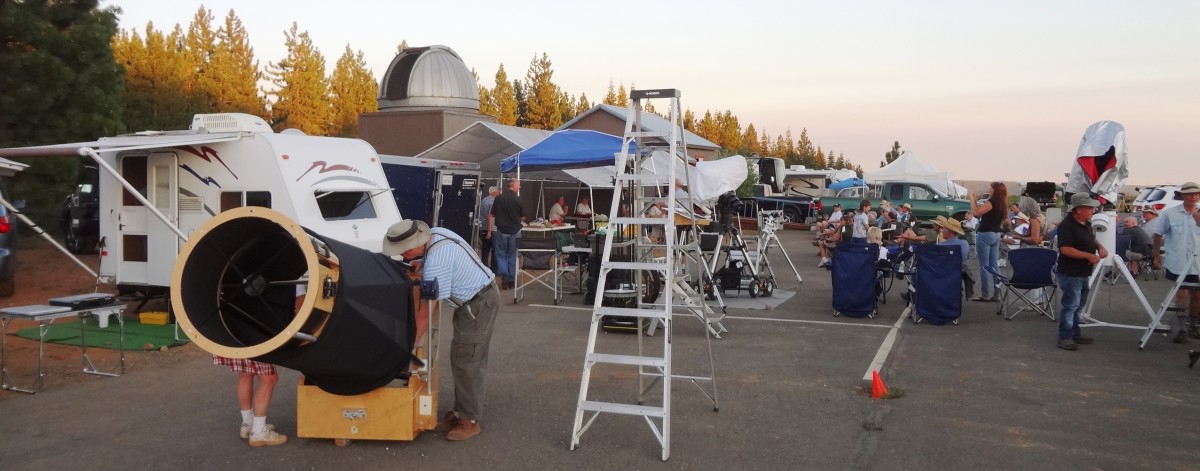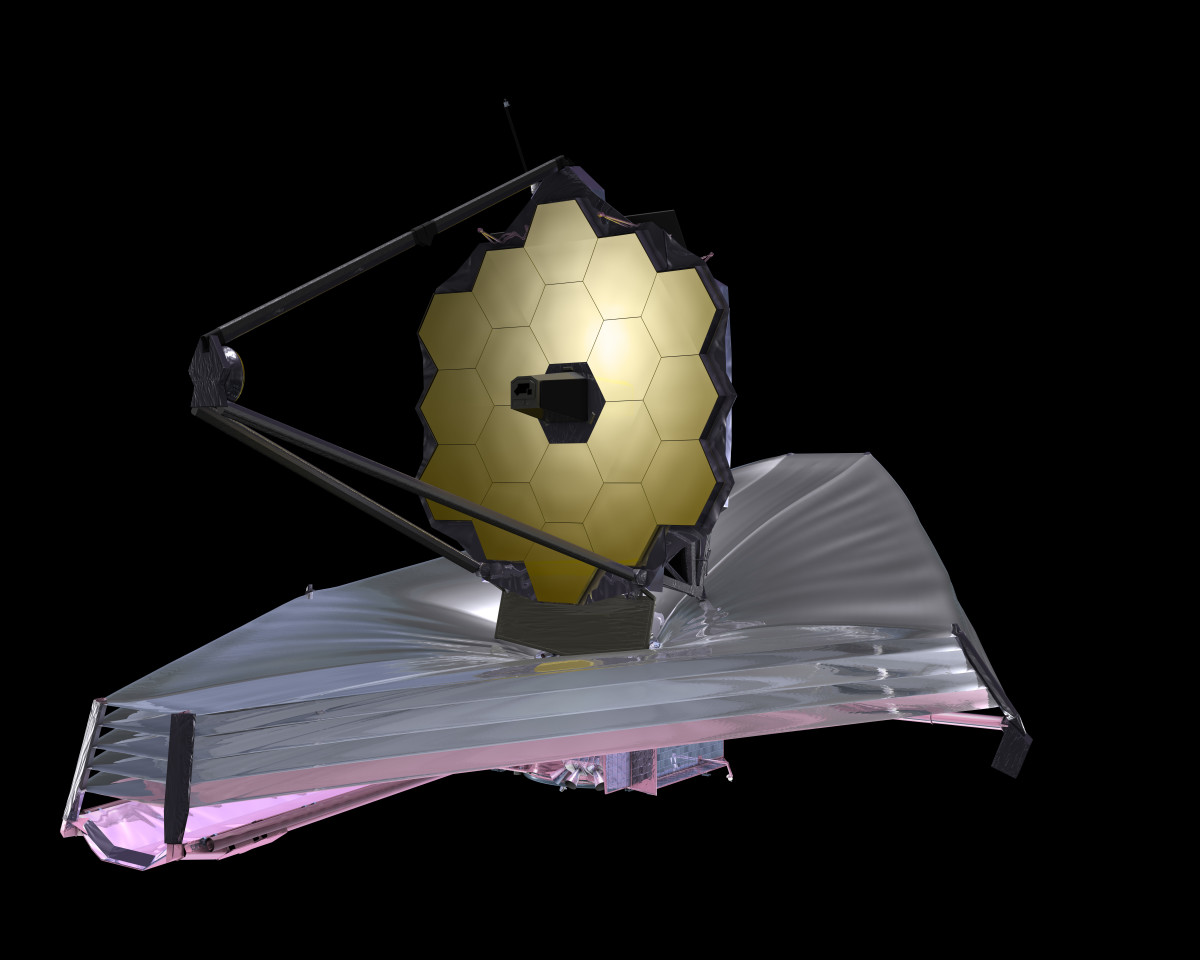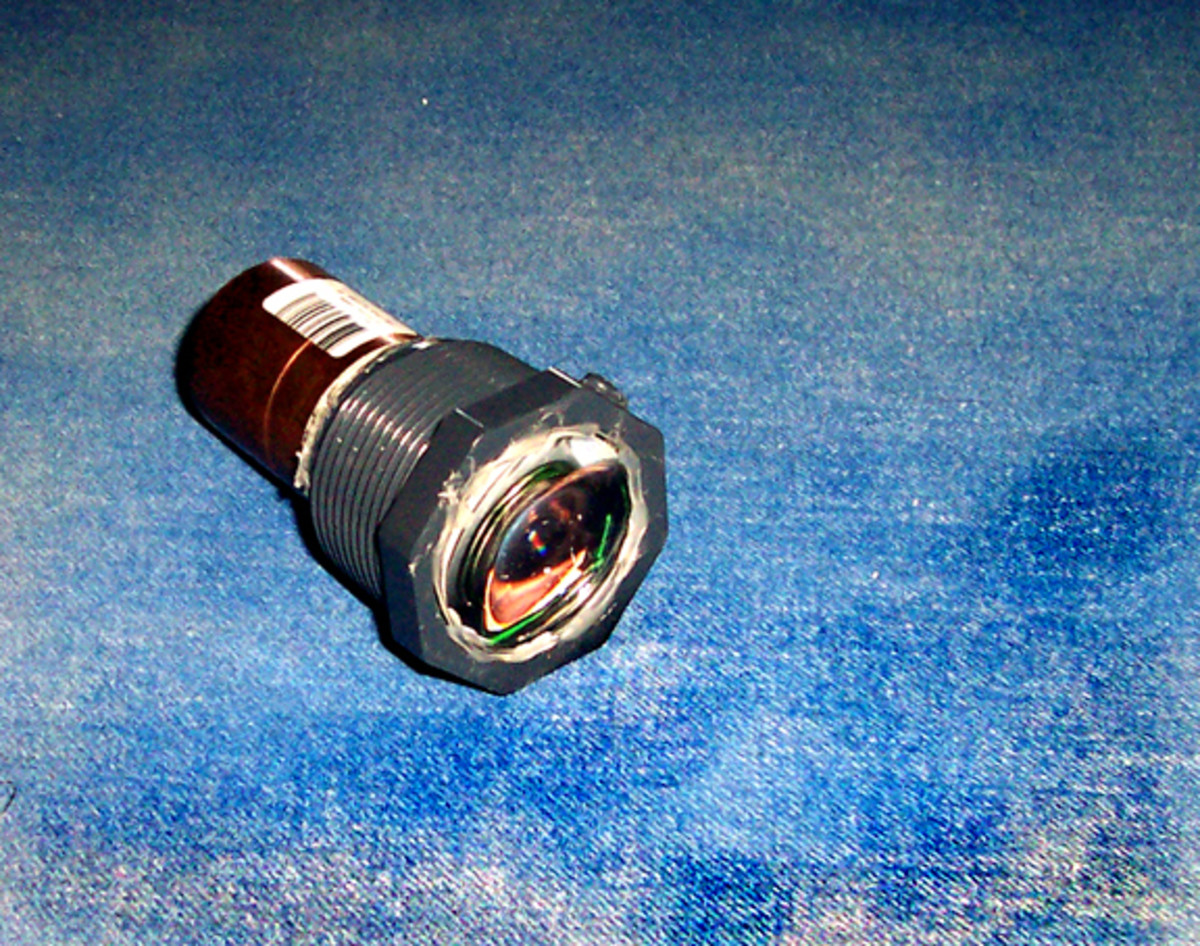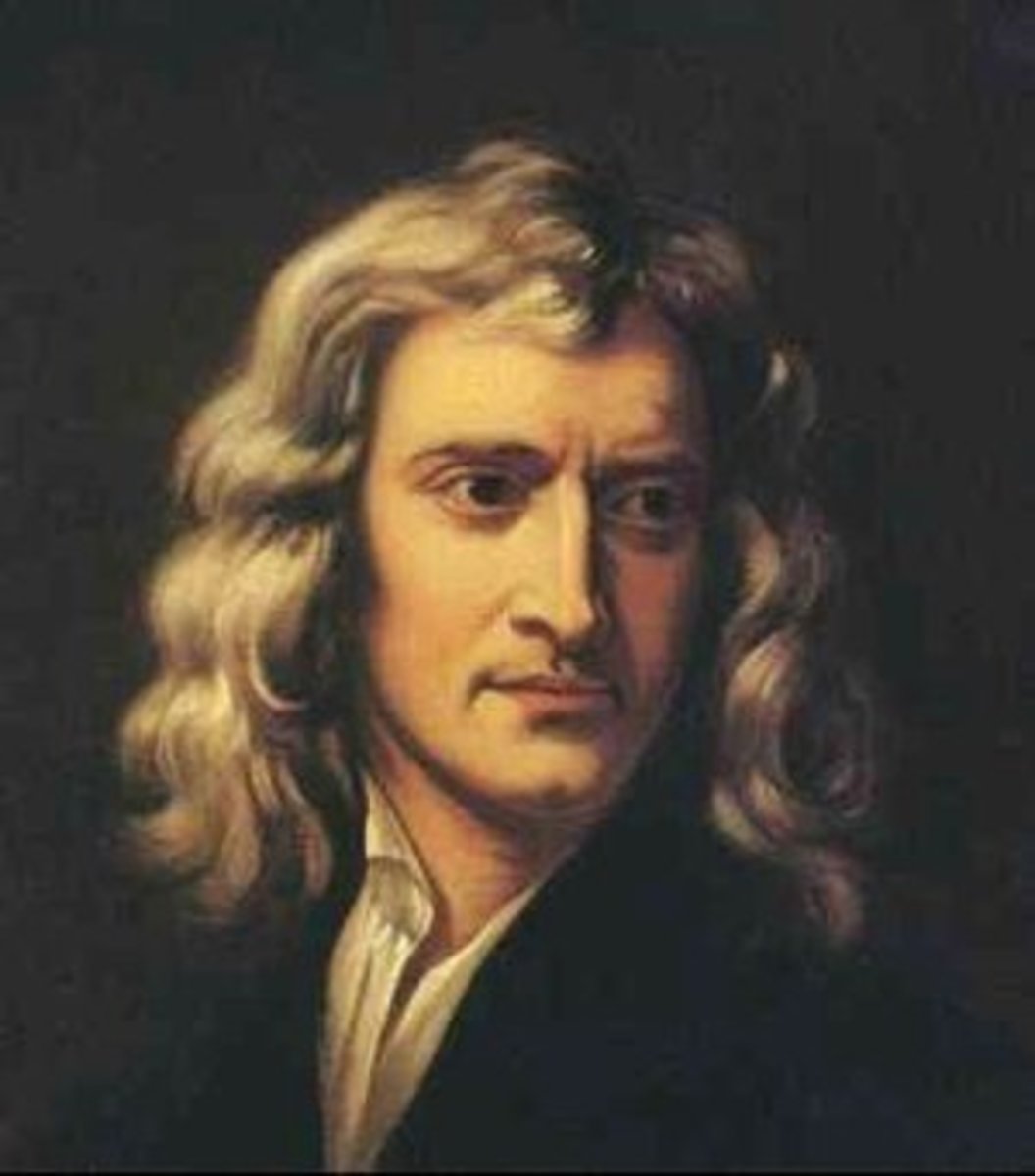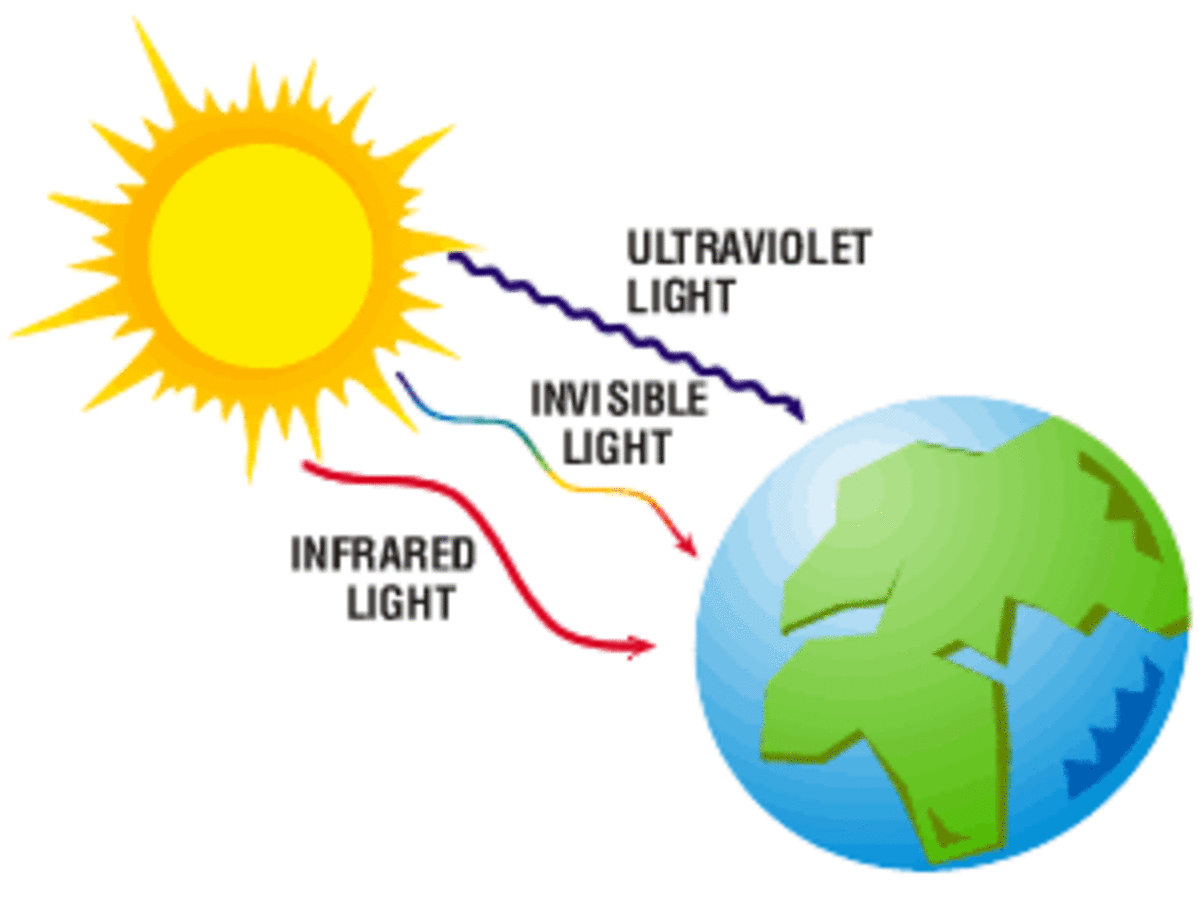All You Need To Know About Telescopes
Telescopes bring distant objects closer
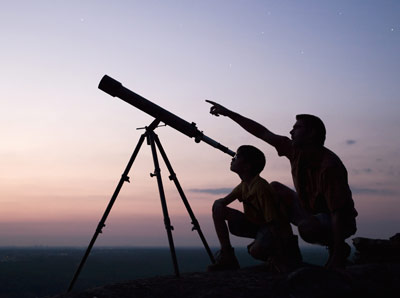
An outer space image taken by the Hubble Telescope
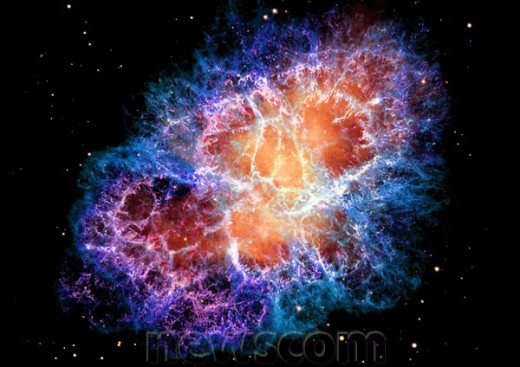
What Is A Telescope?
A Telescope is an optical instrument which enables us to see distant objects by collecting visible light reflected from those objects. The word “telescope” refers to a wide range of instruments which detect different regions of the electromagnetic spectrum. The word “Telescope” was coined in 1611 AD by the Greek mathematician Giovanni Demisiani for one of the instruments developed by famous scientist Galileo Galilei (at the Accademia dei Lincei).
Out of all the types of telescopes discovered, an optical telescope is the most interesting and fascinating because we can only see visible light with our naked eyes. Thus, an optical ‘astronomical telescope’ can help us to see the distant moon and stars very closely.
The 20th century saw the development of telescopes that worked in a wide range of wavelengths from radio to gamma-rays. The first built radio telescope became functional in 1937. Since then, a number of complex astronomical instruments have been discovered by scientists.
Galileo with his telescope
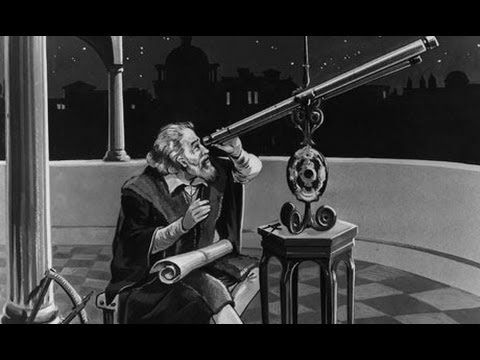
How Telescopes Were Invented?
The telescope is a discovery of the optical craftsmen rather than an invention of a scientist.
The earliest recorded working telescopes were the refracting telescopes that appeared in the Netherlands in 1608. The invention and development of Telescope is credited to three men – Hans Lippershey and Zacharias Janssen of Middelburg, and Jacob Metius of Alkmaar. They were spectacle makers.
Galileo Galilei built his own telescope within a month after he heard about the Dutch telescope and also improved the design in the following year.
The idea that the objective lens (the light-gathering material) could be a mirror instead of a lens was investigated after the refracting telescope was invented. The advantages of using a parabolic mirror which reduces the spherical and chromatic aberration’s had led to many new designs and several new attempts to build the reflecting telescopes.In 1668, the great scientist Isaac Newton built the first practical reflecting telescope which is now called the Newtonian reflector.
The invention of the achromatic lens in 1733 corrected color aberrations present in the simple lens and thus, enabled the construction of a shorter functional refracting telescope. The maximum physical size limit for a refracting telescope is 1 meter and the majority of large optical researching telescopes built since the turn of the 20th century have been reflectors. The largest reflecting telescopes currently have objectives larger than 10 m.
The Electromagnetic Spectrum
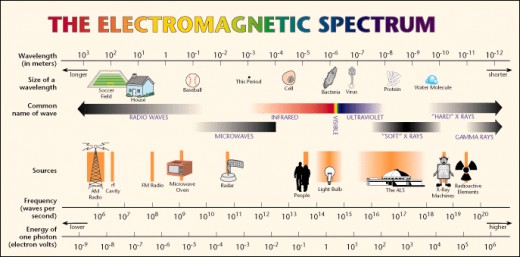
A Reflecting Optical Telescope
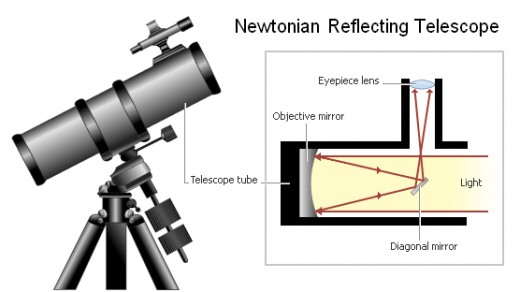
A Refracting Optical Telescope
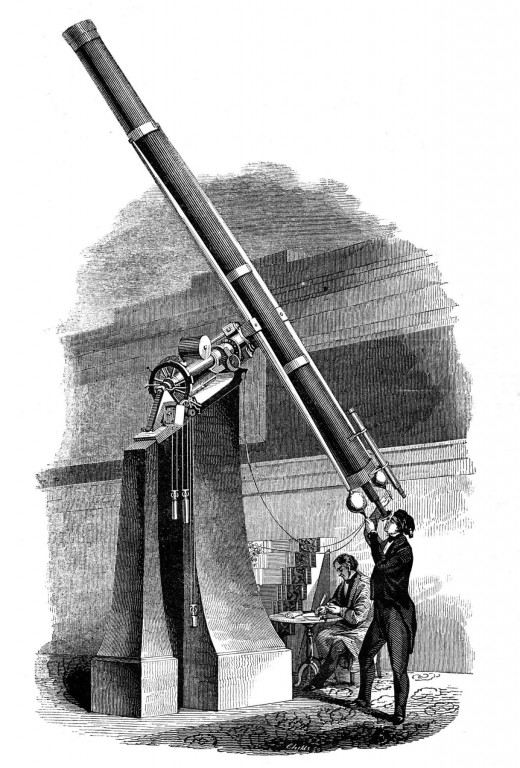
An X-ray Telescope
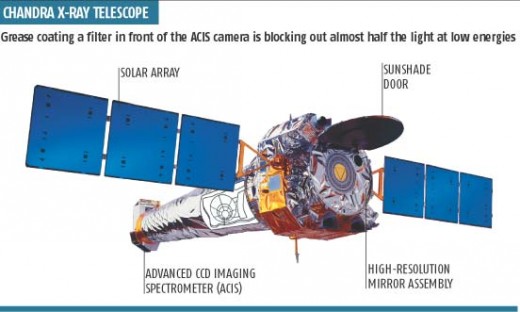
Radio Telescope
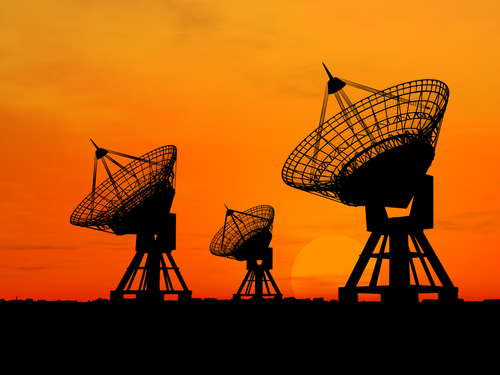
Veritas Gamma Ray Telescope
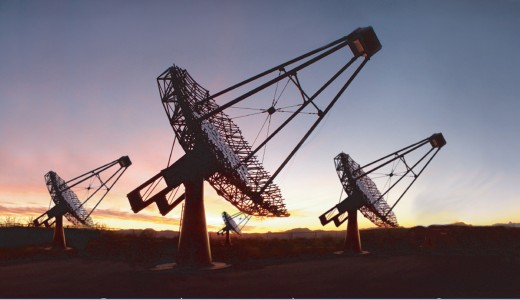
Types of Telescopes
he name "telescope" covers a wide range of instruments. Most of them detect electromagnetic radiation. Telescopes are classified by location: ground telescope, space telescope or flying telescope. A permanent campus containing one or more telescopes or other such instruments is called an Observatory.
Telescopes may be classified by the wavelengths of light they detect:
1. Optical telescope is a telescope which uses visible light reflected from the object. A telescope's light gathering power and its ability to resolve the finer details is directly related to the diameter (or aperture) of its objective (the primary lens or mirror that collects and focuses the light). The larger is the objective, the more light the optical telescope can collect and the finer detail it can resolve, thus, increasing the clarity.
The types of optical telescope are-
A) Reflecting Telescopes - Reflecting telescopes have one or more concave mirrors for the objective lens to absorb and collect the light and a small lens to view, which is called an eyepiece.
B) Refracting Telescopes - Refracting telescopes have a system of lenses that collect and refract the incident light to magnify the image. They have an objective lens and an eyepiece lens. Multiple lenses are used to correct aberrations.
2. X-ray telescopes such as the Wolter telescope is composed of mirrors made up of heavy metals that reflect the rays just a few degrees. The metal mirrors are usually a section of a parabola, hyperbola or ellipse. In 1952, Hans Wolter outlined 3 ways a telescope could be built using only this kind of mirror. Examples of an observatory using X-ray telescopes are the Einstein Observatory, ROSAT and the Chandra X-Ray Observatory.
3. Radio telescopes are directional radio antennas used for radio astronomy. The dishes are built by using a conductive wire mesh which has small openings than the wavelength that is to be observed. Some radio telescopes are used by programs such as SETI and the Arecibo Observatory to search for extraterrestrial life or aliens.
4. Higher energy X-ray and Gamma-ray telescopes uses a coded aperture mask. Then, the mask created is reconstructed to form an image by judging the patterns of the shadow X-ray and Gamma-ray telescopes are usually found on Earth-orbiting satellites or high-flying balloons. This is because the Earth's atmosphere is opaque to this part of the electromagnetic spectrum. An example of this type of telescope is the Fermi Gamma-ray Space Telescope.
Focal Ratio
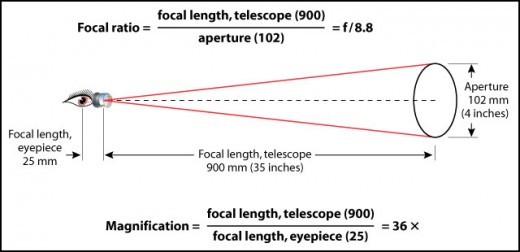
Spherical Aberration
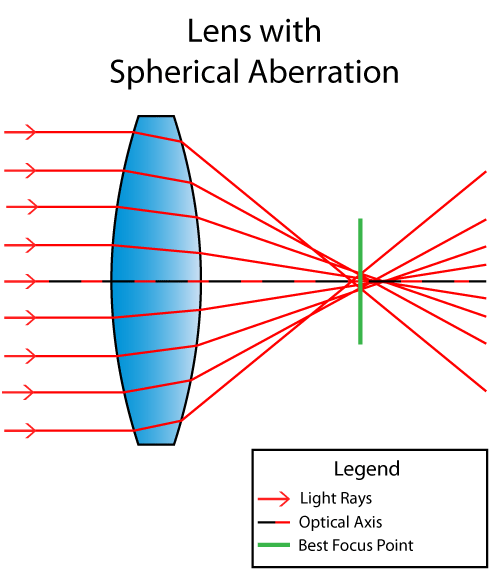
Technical Aspects of an Optical Telescope
1. Focal length and focal ratio (f ratio) -
The focal ratio of a telescope is the ratio between the focal length and the diameter (aperture) of the objective. The focal length of a telescope calculates how wide an angle the instrument can view with a given eyepiece lens. Thus, for a given objective diameter, a low focal-ratio indicate a wide field of view.
2. Light gathering power -
The light-gathering power of an optical telescope is proportional to the area of the objective lens or mirror and to the square of the aperture. A bigger telescope has an advantage over a smaller one because their sensitivity increases as the square of the diameter. For example, a 7 meter telescope would be about ten times more sensitive than a 2.4 meter telescope.
3. Imperfect images -
No telescope can form a perfect image. Even if a reflecting telescope has a perfect mirror or a refracting telescope has a perfect lens, the effects of aperture diffraction cannot be avoided. In reality, perfect mirrors and perfect lenses do not exist, so image aberrations take place. Image aberrations are of two main types, monochromatic, and polychromatic. In 1857, Philipp Ludwig von Seidel (1821–1896) demonstrated the five main aberrations. They are now called as the five Seidel Aberrations.
Astigmatism
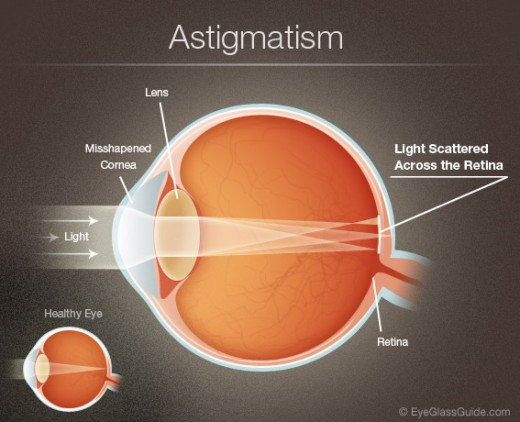
The five Seidel aberrations
- Spherical aberration - The difference in focal length between the paraxial ray and the marginal ray which is proportional to the square of the objective diameter.
- Coma - It is a defect by which the points are imaged as comet-like asymmetrical patches of light with tails which makes the measurement very faulty.
- Astigmatism - The image of a point forms focal lines like an elliptical shape.
- Distortion- Either barrel or pincushion, a radial distortion which must be corrected for if multiple images are to be combined (similar to stitching multiple photos into a panoramic photo).
- Curvature of Field- The image lies on a curved surface which is described as hollow or round. This causes problems when a flat imaging device is used such as a photographic plate or CCD image sensor.
the great Paris exhibition telescope of 1900
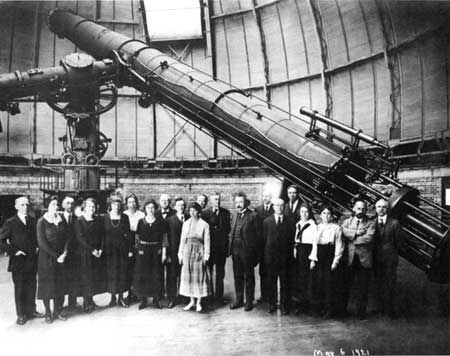
The Great Paris Exhibition Telescope of 1900
In this famous exhibition, a telescope was constructed which had an objective lens of 1.25 m in diameter, it was the largest refracting telescope ever built. It was made as the centerpiece of the Paris Universal Exhibition of 1900. Its construction was started in 1892 by François Deloncle (1856–1922). Since it was built for exhibition purposes and its design made it difficult to aim at astronomical objects, it was not suited for scientific use. When the year-long exposition was over, its builders were unable to sell it. It was ultimately broken up for scrap; the lenses are still stored away at the Paris Observatory.
A Telescope In The Space
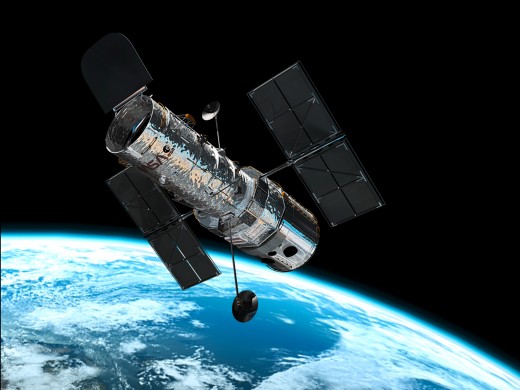
Future of Telescopes
The phenomenon of optical diffraction sets a limit to the resolution and image quality that a telescope can achieve and limits how close two such discs can be placed. This absolute limit is called the diffraction limit. This limit depends on the wavelength of the studied light and on the diameter of the telescope mirror. A telescope built with a certain mirror diameter can theoretically resolve up to a certain limit at a certain wavelength. For conventional telescopes on Earth, the diffraction limit is not relevant for telescopes bigger than the size of 10 cm. However, in space, if adaptive optics are used, then reaching the diffraction limit is sometimes possible. At this point, if greater resolution is needed at that wavelength, a wider mirror has to be built.
In recent years, a number of technologies to overcome the distortions caused by our atmosphere on ground-based telescopes have been developed with satisfying results. We may hope for the development of powerful telescopes in recent future with which we may see distant stars, and even other solar systems! (No harm in speculating.)


